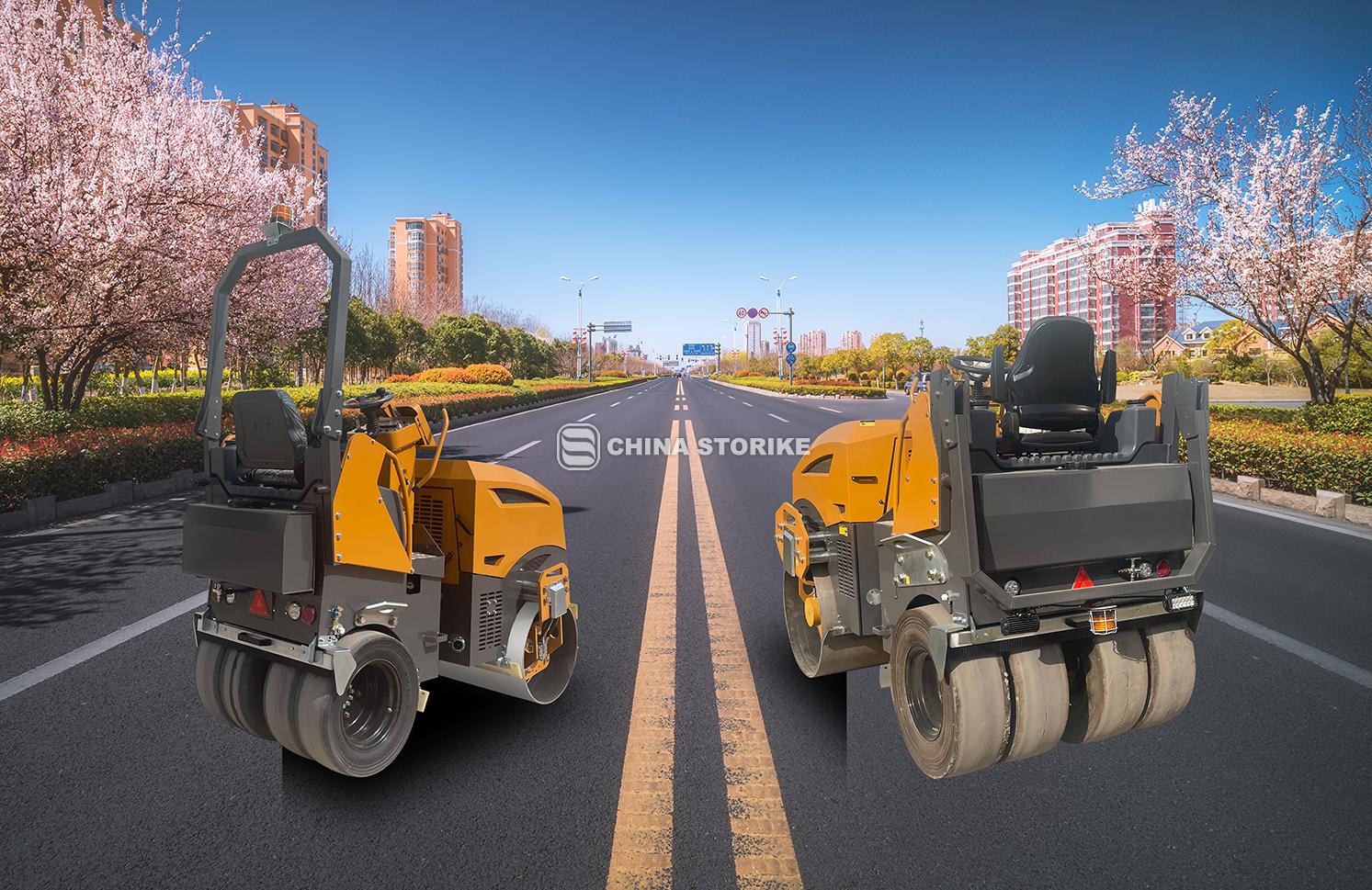
1、 Compaction quality
Due to the fact that the vibrating steel wheel of a fully hydraulic small roller is both a driving wheel and a vibrating wheel, the vibrating steel wheel is in a rolling state during compaction construction, effectively solving the problems of wrinkling and soil support during soil compaction. Due to the fact that the vibrating wheel of a mechanical small roller only vibrates and the driving wheel is the driven wheel, the sliding of the driven wheel during the compaction process can cause soil compaction and surface cracks.
2、 Compactness
Due to the fact that fully hydraulic small rollers are all wheel driven, in order to improve compaction, the distribution mass on the vibrating wheels is usually large. Due to the lack of front wheel drive, mechanical small rollers have to distribute more mass to the rear wheels to ensure the traction force of the roller. Therefore, the distribution of mass to the front wheels is significantly reduced. For vibration rollers, when the vibration frequency and amplitude of the vibration wheels remain unchanged, the soil compaction is mainly related to the static line pressure of the vibration wheels. An increase in static line pressure will significantly improve the compaction of the roller and reduce the number of compaction passes.
3、 Operational performance
The operation of fully hydraulic small rollers fully utilizes the characteristics of hydraulic transmission, and even manually operated variable displacement pumps are very lightweight and simple. The mechanical transmission system, due to the introduction of clutches and transmissions, has a relatively complex operating mechanism and sequence for driving operations, resulting in high labor intensity. For operators, getting used to it doesn't seem very complicated. It should be particularly emphasized that due to the fact that the hydraulic pump of the vibration system of mechanical small rollers takes power from the engine or transmission, changing the driving speed of the roller requires the clutch to be disengaged before shifting. At this time, the engine speed will have a significant change, causing a sharp decrease in the flow rate of the hydraulic pump of the vibration system (directly proportional to the engine speed), This will cause a significant impact on the vibration system (a sharp increase in pressure in the vibration system). So mechanical small rollers cannot shift gears during vibration, while fully hydraulic small rollers can shift gears freely during vibration.
4、 Rolling speed
The rolling speed of the roller has a significant impact on the compaction of soil, and there is a rolling speed for different layer materials and thicknesses. In general, mechanical driven rollers only have a fixed two speed range, while hydraulic driven rollers can achieve stepless speed change within each range and maintain a constant speed.
5、 Climbing performance
The fully hydraulic small roller adopts full wheel drive, fully utilizing the full self weight of the roller, with strong adhesion and climbing slopes up to 55% or even higher, which is conducive to the compaction of roads and embankments. Due to the fact that mechanical rollers only have rear wheel drive, their driving force is significantly reduced, and their climbing ability is usually only about 30%.
6、 Security
Due to the poor conditions in the construction site of small rollers, safety accidents are prone to occur, so safety is particularly important for small rollers. Fully hydraulic small rollers generally use hydraulic automatic return braking. As long as the control handle is pushed or pulled to the middle position, immediate braking can be achieved, making the braking light, fast, stable, and reliable. When braking a mechanical small roller, it is necessary to first step on the clutch and then step on the foot brake. The braking action is frequent and takes a long time, and due to the many links in the braking mechanism, the reliability is poor, so the safety is worse than that of full hydraulic pressure.
7、 Reliability
Due to the transformation of flexible connections (hydraulic transmission) in the design and manufacturing process into rigid connections, and the addition of traditional mechanical transmission links such as clutches, transmissions, and transfer boxes, the reliability of mechanical small rollers has been partially reduced. These links may also be the midpoint of quality issues during the use process.
8、 Environmental adaptability
Small rollers are mostly used for foundation compaction, and their working conditions are generally poor. Fully hydraulic small rollers can continuously change speed during driving, have good driving and passing performance, and can fully adapt to complex working environments. However, mechanical small rollers have poorer environmental adaptability compared to fully hydraulic small rollers due to poor driving and passing performance.
Contact: Ms. Anna
Phone: +8613964983086
E-mail: Alex.cui@storike.com
Add: Incalcu Industrial Park, 327 National Road, High-tech Zone, Jining City, China., Jining, Shandong, China